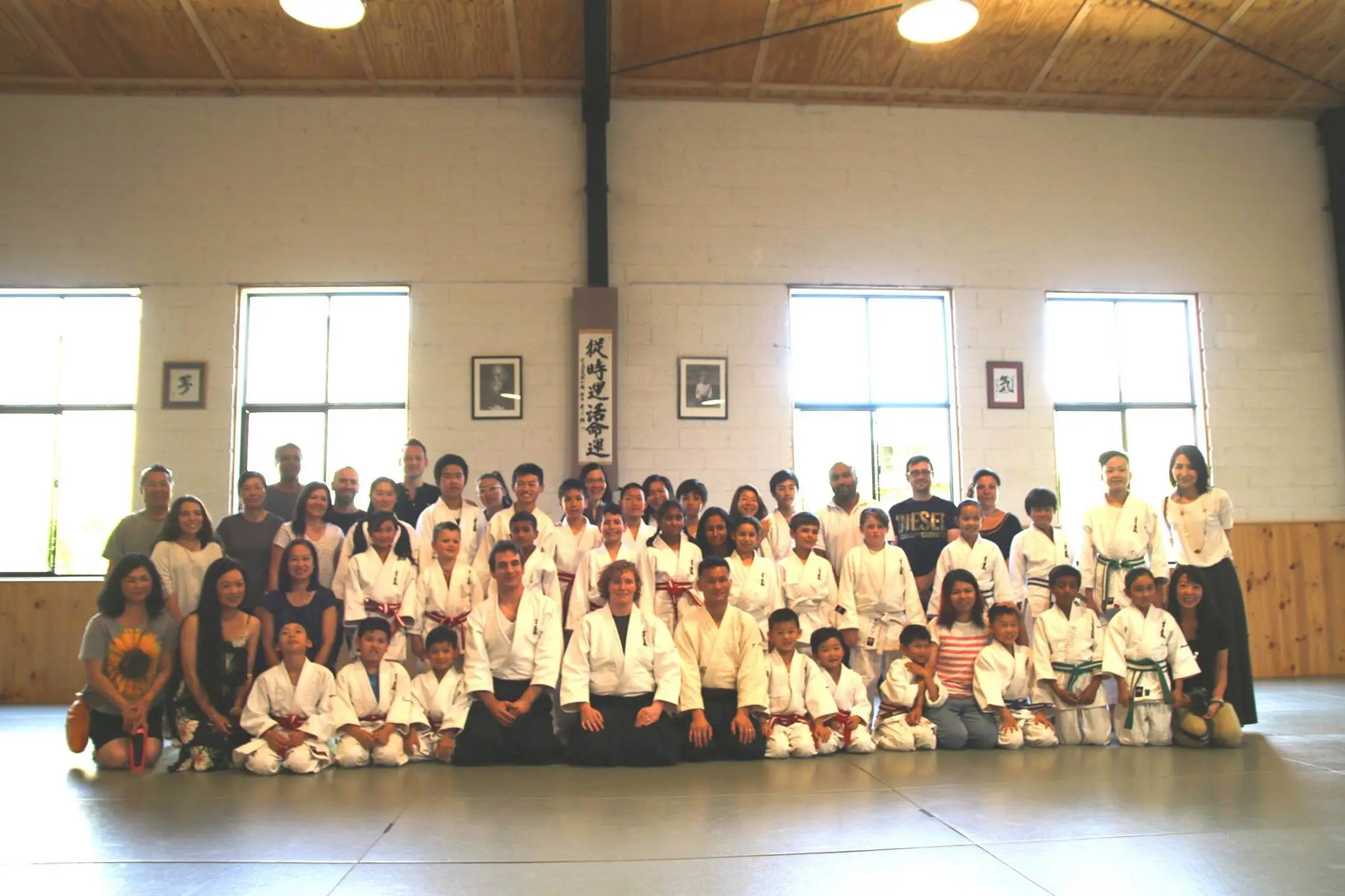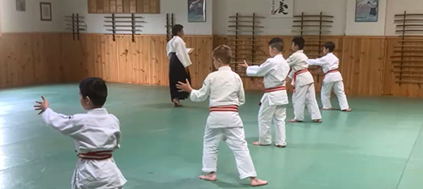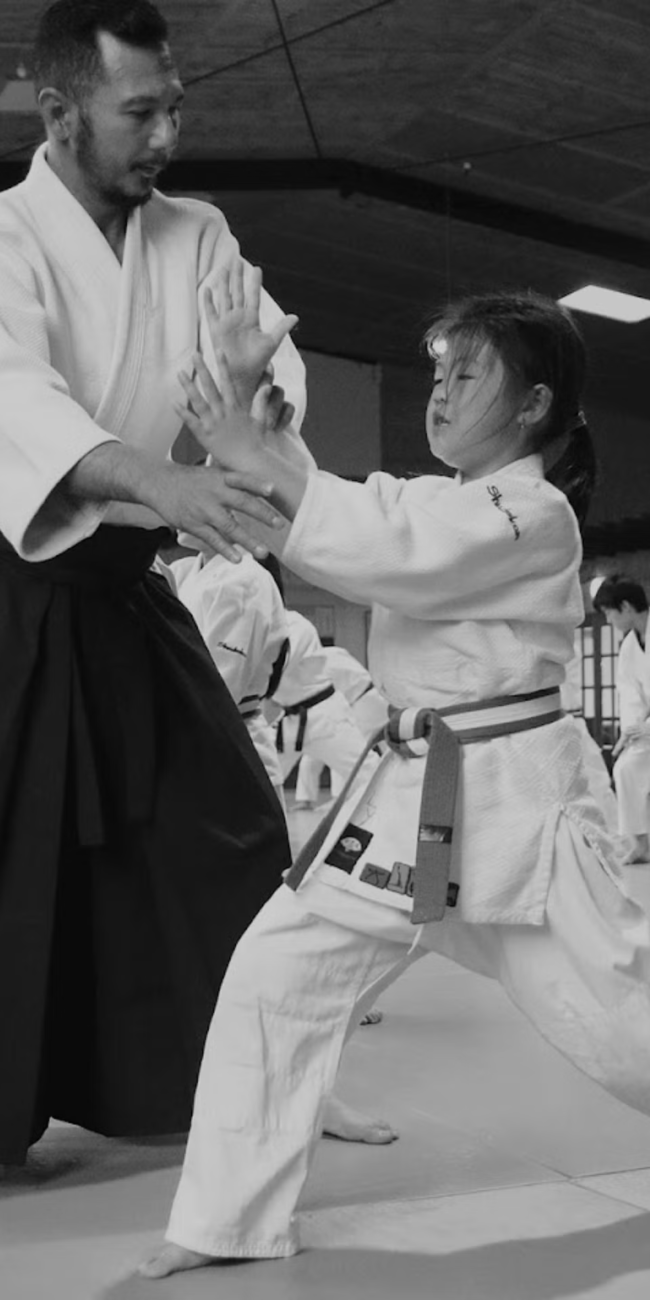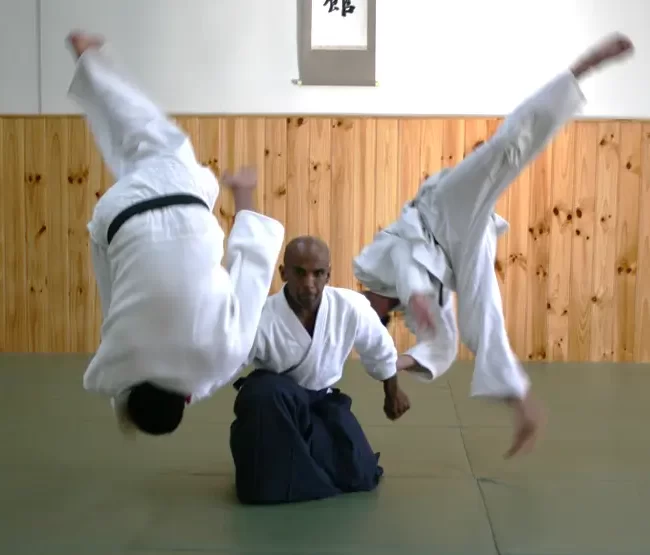
Shudokan Aikido, also known as Yoshinkan Aikido, is a dynamic and combat-effective system of throwing, joint-locks, strikes, and pinning techniques. It emphasizes practical efficiency and is often used to train women and anti-riot teams of the Tokyo Metropolitan Police. Unlike other forms of martial arts, there are no tournaments, and it is not considered a sport.
The Lineage of Aikido Shudokan
Aikido Shudokan has a clear lineage to traditional Aikido. The founder of Aikido, Ueshiba Morihei, was a student of Takeda Sokaku. One of Ueshiba’s prominent students, Shioda Gozo, founded the Yoshinkan style of Aikido. In the mid-1950s, after the ban on martial arts was lifted, Shioda became the first person to demonstrate Aikido to the general public at a post-war demonstration of budo attended by around 15,000 people. Shioda won the award for the most outstanding demonstration among almost 150 others, and soon after established the Yoshinkan. In 1961, Shioda became the first person to be awarded a 9th dan rank by Ueshiba.
The Introduction of Aikido Shudokan to Malaysia
In the late 1950s, a young Malaysian named Thamby Rajah moved to Japan to learn the art of Judo. He had already trained in gymnastics and some Ju-Jitsu. Thamby Rajah trained for a year at the Kodokan under world-renowned teachers Haruyoshi Ichijima and Kyuzo Mifune, becoming the first Malaysian to attain the rank of Shodan in Judo. During his time in Japan, Thamby Rajah chanced upon some senior Judo students practicing unfamiliar techniques. Upon asking where they learned such techniques, they revealed they were studying Aikido under Shioda of the Yoshinkan.
Before his year at the Kodokan was up, Thamby Rajah visited the Yoshinkan himself and decided he would soon return to study this art. In the late 1950s, Thamby Rajah returned to Japan and under Shioda’s tutelage, he attained Shodan in Yoshinkan Aikido. He then returned to Malaysia as the first Malaysian with a Shodan in both Aikido and Judo. He set up his first school under the name of Shudokan, a name given to him by Shioda. This was the first Aikido dojo in Malaysia and one of the first Yoshinkan Dojos outside of Japan.
The Misconception of Aikido Shudokan as the “Soft” Version
A common misconception is that Aikido Shudokan is the “soft” version of Yoshinkan Aikido. This is not accurate as both styles share the same techniques and principles. However, Aikido Shudokan places more emphasis on the practical application of techniques, which may give the impression of being “softer” than Yoshinkan Aikido.
Benefits of Practicing Aikido Shudokan
Practicing Aikido Shudokan can have numerous benefits for both the body and mind. It can improve strength, flexibility, balance, and coordination, while also promoting relaxation and reducing stress. Aikido Shudokan also emphasizes the development of self-discipline, respect for others, and a peaceful attitude.
In conclusion, the history of Aikido Shudokan is an intriguing story of the development of martial arts and its influence beyond its country of origin. It started with the founder of Aikido, Ueshiba Morihei, and his student, Shioda Gozo, who later founded the Yoshinkan style of Aikido. This style emphasizes practical efficiency and is used to train women and anti-riot teams of the Tokyo Metropolitan Police.
The story then leads to the establishment of the first Aikido dojo in Malaysia by Thamby Rajah, who had trained under Shioda and was the first Malaysian with a shodan in both Aikido and Judo. The dojo was named Shudokan, after the style of Aikido practiced by Thamby Rajah.
Today, Aikido Shudokan continues to have a strong presence in Malaysia, with several dojos across the country. It has also spread to other countries, including Australia, New Zealand, and Singapore.
While it may not be classified as a sport and there are no tournaments, Aikido Shudokan is still an effective martial art that emphasizes practicality and efficiency in self-defense. Its techniques are dynamic and combat-effective, making it a valuable skill for anyone interested in martial arts or self-defense.
Overall, the history of Aikido Shudokan is a testament to the enduring legacy of martial arts and its ability to transcend borders and cultures. Through its development, we can see how martial arts continue to evolve and adapt to meet the needs of its practitioners, and how it can have a positive impact on individuals and communities around the world.





